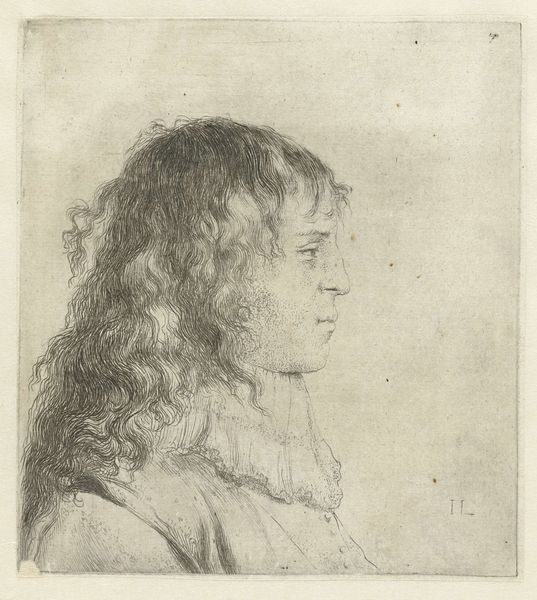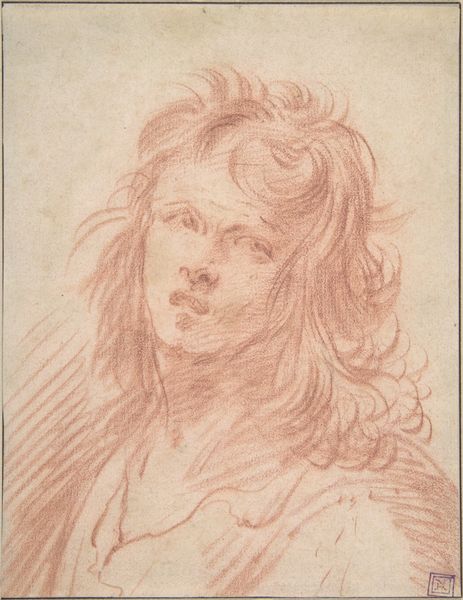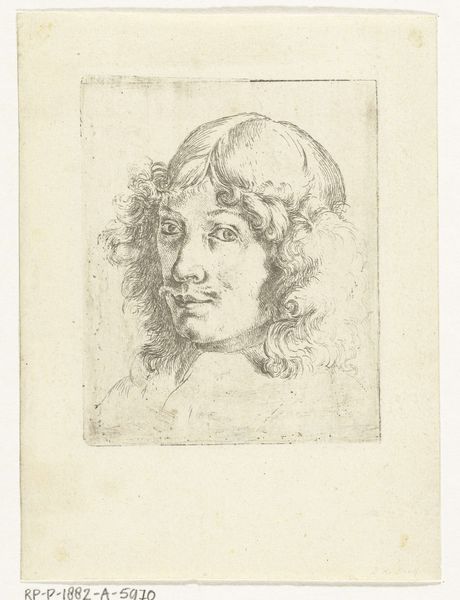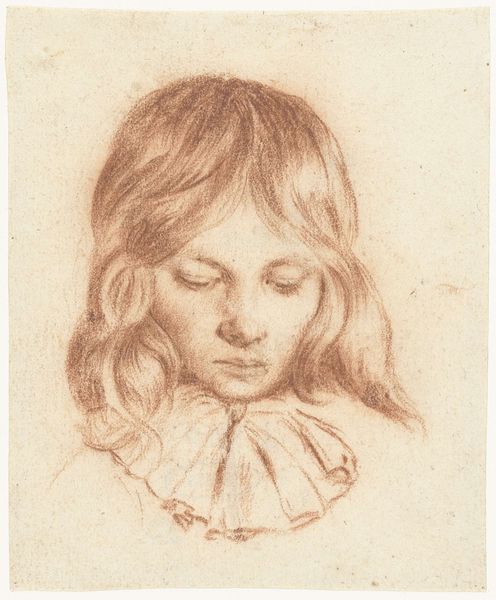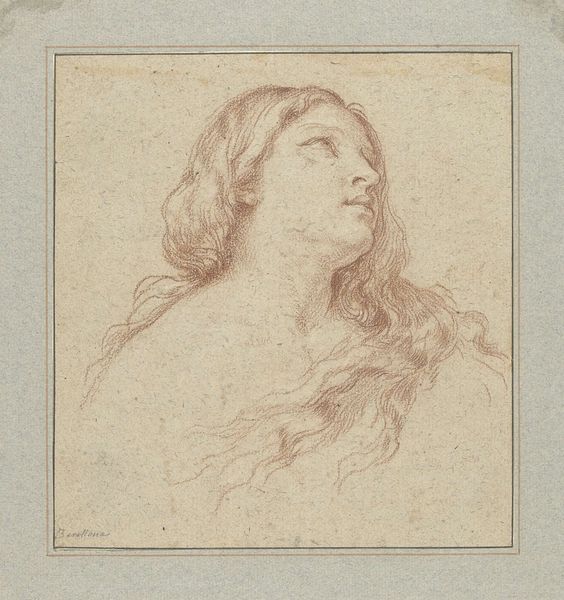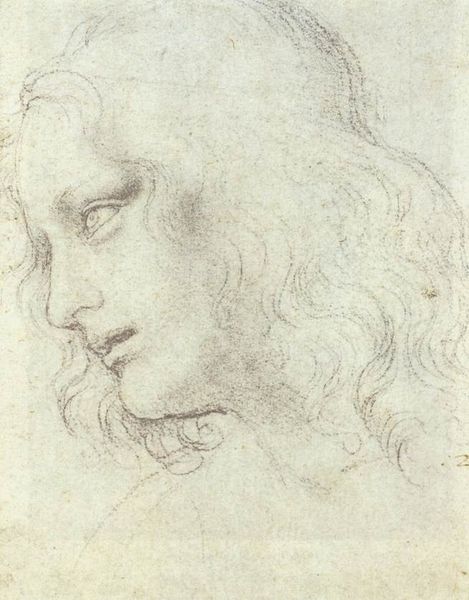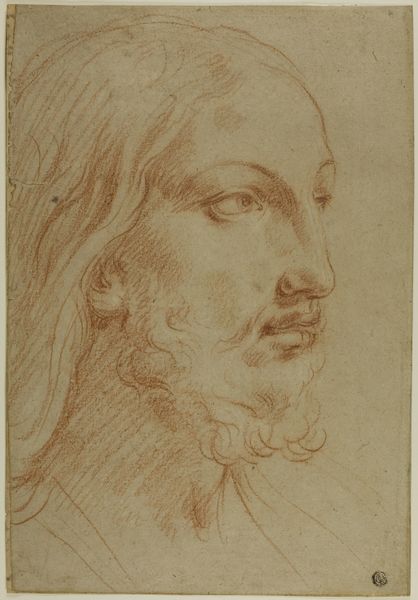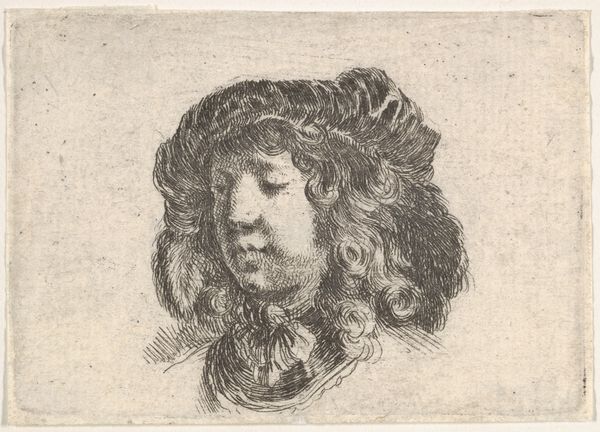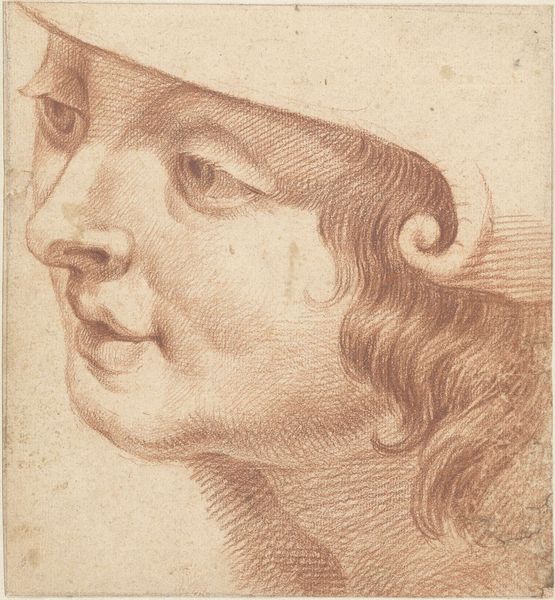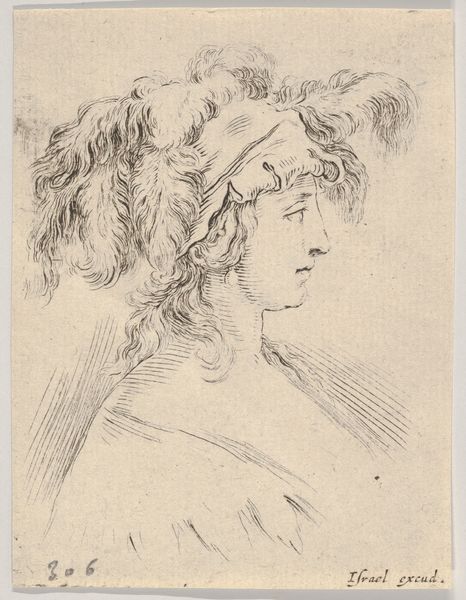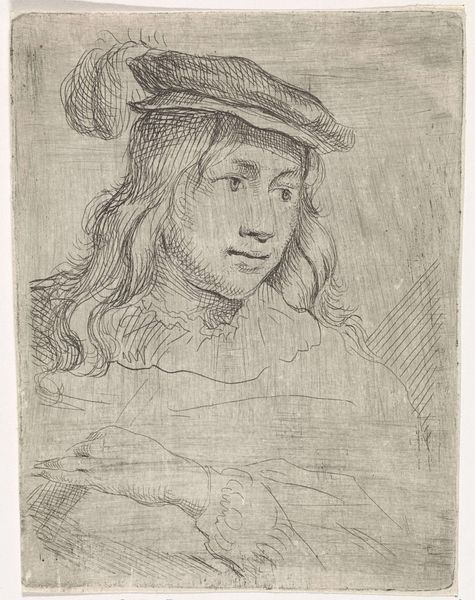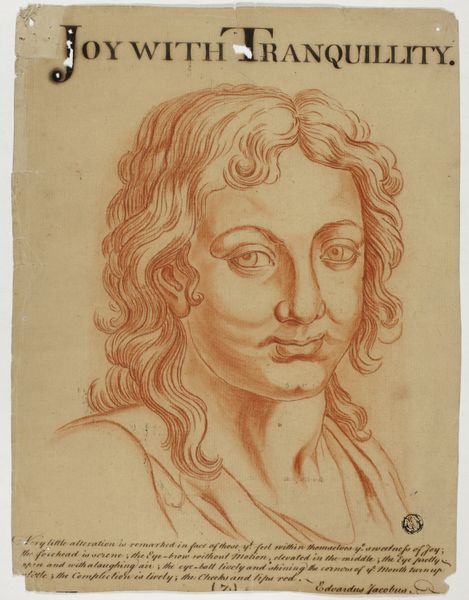
drawing, pen
#
drawing
#
baroque
#
pencil drawing
#
pen
#
portrait drawing
Dimensions: height 140 mm, width 107 mm
Copyright: Rijks Museum: Open Domain
Curator: Immediately striking, isn't it? This drawing titled "Hoofd van een jongeman, naar links," which translates to "Head of a Young Man, Facing Left", made before 1675, is attributed to Gerard ter Borch II, rendered delicately with pen and pencil. Editor: My initial impression is of youthful melancholy. The subject's gaze is averted, conveying a sense of introspection. There’s also something rather androgynous about the subject that feels intriguing, especially within the socio-historical context. Curator: Borch was known for his incredible attention to detail, especially the textures and materiality of fabrics in his paintings, although here those qualities are not available. This drawing is very different and offers insights to Borch's overall process. Do you think this portrait may have served as preliminary work? Editor: Perhaps. Looking at it now, I am interested in the potential societal pressures surrounding gender expression during the Baroque period. How would a young man, or anyone, navigate the restrictive norms? The artwork becomes more than just a pretty drawing, it embodies this potential dialogue. Curator: Agreed. The act of capturing a subject like this is also the preservation of labor and the artist's hand through pen and pencil. Consider the artisanal work involved in creating and distributing these works. Editor: And the accessibility of such depictions too. Drawings, compared to large scale history paintings, would circulate differently, possibly engaging a more diverse audience. What kinds of meaning-making might different social groups ascribe to this image? Curator: Exactly, who purchased it, who handled it, and where might it have been displayed? And speaking of audience, think about Borch's studio. We know that both of his sisters, Gesina and Gesilla, were accomplished artists themselves. So to have them involved with the artist's practice raises other labor related questions, such as access, instruction, and the distribution of skilled trades. Editor: It’s really the intersection of art, labour, and identity here that resonates for me. Thanks for illuminating all the details around the creation. Curator: My pleasure. Hopefully, our listeners can take that all with them as they contemplate the piece on their own terms.
Comments
No comments
Be the first to comment and join the conversation on the ultimate creative platform.
